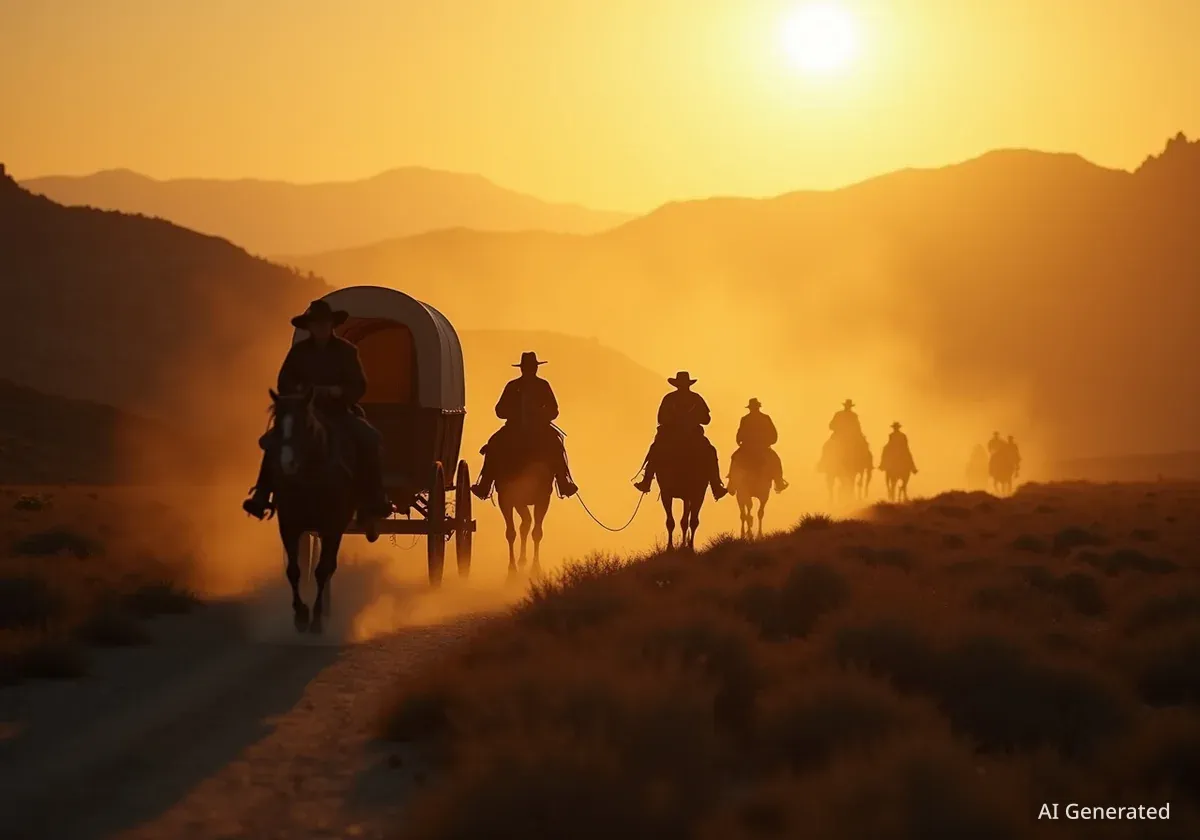The journey along the Oregon Trail, a defining chapter in American history, comes to life through the detailed paintings of William Henry Jackson. His artwork provides a visual record of the challenges and landscapes encountered by pioneers making their way west. These images capture key landmarks and daily experiences, offering insight into the arduous trek.
Key Takeaways
- William Henry Jackson documented the Oregon Trail through his paintings.
- His artwork showcases significant landmarks like Chimney Rock and Scotts Bluff.
- The paintings illustrate daily pioneer life, including wagon trains and river crossings.
- Fort Laramie served as a vital resupply point for emigrants.
- The Barlow Cutoff offered an alternative route to the Willamette Valley.
Documenting the Pioneer Journey
William Henry Jackson's artistic contributions offer a unique window into the American westward expansion. His paintings are more than just landscapes; they are historical documents. They show the incredible scale of the journey undertaken by thousands of emigrants.
Jackson's work details the vast distances covered and the varied terrain. From flat plains to mountain passes, each painting tells a part of the story. These visuals help us understand the physical demands placed on those who traveled the Oregon Trail.
Historical Insight
The Oregon Trail stretched over 2,000 miles, connecting the Missouri River to valleys in Oregon. It was used by an estimated 400,000 settlers, farmers, miners, and businessmen during the mid-19th century.
Landmarks Along the Trail
Many of Jackson's paintings highlight iconic landmarks that guided pioneers. These natural features served as navigational points and symbols of progress.
Chimney Rock and Scotts Bluff
One striking image shows travel-worn emigrant wagons circling for the night near Chimney Rock. This distinctive geological formation in western Nebraska was a welcome sight for pioneers. It signaled that they were nearing the end of the plains and approaching the Rocky Mountains.
Another painting depicts a wagon train moving through the narrow Mitchell Pass at Scotts Bluff National Monument. Eagle Rock and Dome Rock rise majestically in the background. Scotts Bluff was another crucial landmark, often serving as a campsite and a place where travelers could leave messages for those behind them.
"These landmarks were not just points on a map; they were beacons of hope for weary travelers, marking progress on their long journey," explained a historian specializing in westward expansion. "Jackson captured their significance."
River Crossings and Difficult Terrain
The trail presented numerous natural obstacles. Jackson's art shows wagons crossing the South Platte River, often requiring double teams of oxen or horses to manage the currents. These crossings were dangerous and often caused delays.
Three Island Crossing in Idaho was particularly challenging. Emigrants used three natural islands in the Snake River to make the crossing easier. Jackson’s depiction captures the ingenuity and bravery required to navigate such treacherous sections of the trail.
The Barlow Cutoff
Toward the end of the Oregon Trail, many emigrants faced a difficult float down the Columbia River. The Barlow Cutoff, an alternative route, allowed them to bypass this river journey and directly reach the Willamette Valley. Jackson's painting of wagons along this cutoff, with Mount Rainier in the background, illustrates this strategic decision.
Life on the Trail
Beyond the grand landscapes, Jackson also documented the everyday realities of pioneer life. His paintings show the rhythm of the journey, from daily travel to moments of rest.
Resupply and Rest Stops
Fort Laramie, situated along the Laramie River, was a vital stop for fur traders and later for emigrants. It served as a critical location for rest and resupply. The U.S. Army purchased Fort Laramie in 1849, further solidifying its importance as a military post and a safe haven on the trail.
Other notable stops included Alcove Springs, an important landmark for its fresh water and respite. Wagons passing Independence Rock, with Devil's Gate in the distance, further illustrate the continuous movement and the landmarks that broke the monotony of the journey.
- Wagon trains often formed circles at night for protection.
- River crossings were among the most dangerous parts of the journey.
- Forts provided essential supplies and a sense of security.
- Landmarks like Chimney Rock offered visual milestones.
The End of the Journey
Jackson’s paintings also capture the final stages of the journey. One image shows emigrants descending from the Blue Mountains of Oregon. This descent signaled the nearing completion of their long and arduous trek.
The promise of new land and opportunity drove these pioneers forward. Jackson's work preserves their struggles and their triumphs. His paintings remain an invaluable resource for understanding this significant period in American history, offering a visual narrative that complements written accounts.
The detailed scenes provide a tangible connection to the past. They allow us to imagine the sounds, the sights, and the sheer determination of the individuals who shaped the American West. William Henry Jackson's legacy lies in these vibrant historical records, which continue to educate and inspire.
